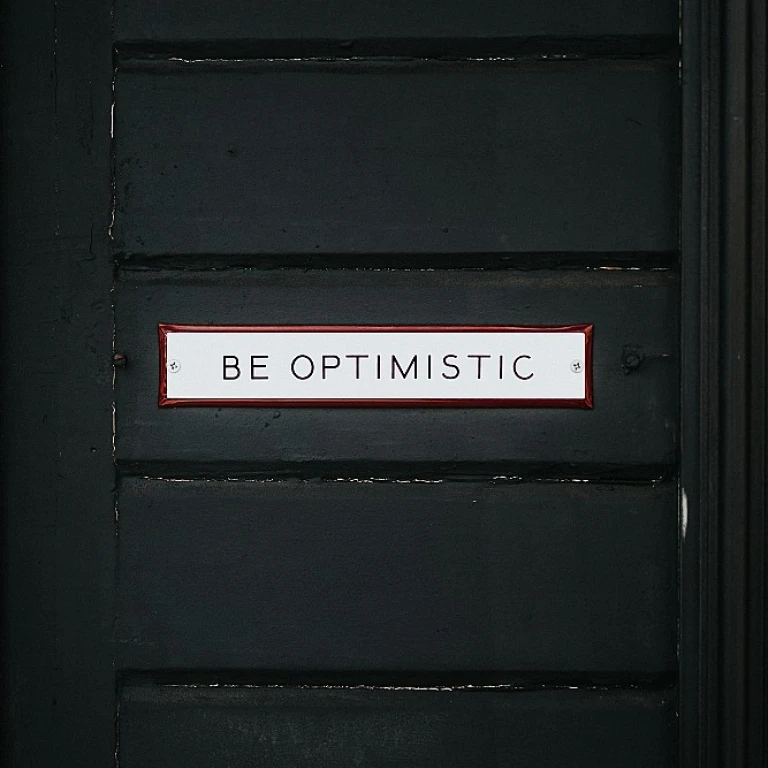Assessing Your Current Job and Skills
Evaluating Your Current Employment Landscape
Before diving headfirst into a career change, it's crucial to conduct a thorough evaluation of your current job situation. Reflecting on your current role and responsibilities can provide essential insights into what drives your desire for change, and what aspects of your career you wish to take forward into your next endeavor.
Many professionals reach a turning point where they find themselves questioning their job satisfaction and long-term goals. This moment presents an opportunity to dissect your daily work life. Are there tasks you relish or aspects you could do without? Assessing these elements can help clarify your objectives and aid in identifying what truly matters to you in your professional journey.
Focusing on Job Satisfaction and Growth
Understanding your level of job satisfaction can be instrumental in plotting a successful career transition. Consider your workplace culture, the dynamics with colleagues, and your overall work-life balance. These facets play a significant role in your daily experience and can inform your decision about what changes are necessary in your new path.
Moreover, think about your growth opportunities. Are you learning and advancing, or do you feel stagnant? Identifying these growth areas can steer you towards industries or roles that better align with your personal and professional goals.
As you evaluate your current professional landscape, you might find it helpful to explore different tools and resources to guide this reflective process. Our detailed guide on
mastering career shifts offers practical strategies to effectively assess your current work situation with an eye towards a brighter future.
Your career transformation begins with a comprehensive understanding of where you stand today. From here, you can create a clear roadmap to transition into a fulfilling career that meets both your aspirations and lifestyle needs.
Identifying Transferable Skills and Interests
Understanding Your Transferable Skills
Many professionals often overlook the hidden treasures they already possess – their transferable skills. Understanding these skills is pivotal when contemplating a career shift. These are essentially abilities and expertise you’ve honed in your current role, which can seamlessly apply to a new field. Whether it's strong communication, project management, or problem-solving skills, recognizing what you excel in is your key to unlock potential career paths.
To truly master career shifts, it's crucial to analyze your day-to-day tasks and pinpoint the skills that could prove beneficial in a new professional landscape.
Exploring Your Interests
Equally important as your skills, your interests should guide your career transition. What inspires and motivates you? Identifying these elements can provide invaluable guidance as you embark on your new journey. Consider not just what you're interested in, but also what industries and roles align with those interests.
You might find our comprehensive resource on mastering career shifts helpful in understanding how to blend your interests and skills effectively during a job change. This can be your stepping stone in preparing for a fruitful transition.
Aligning Skills with Career Goals
Once you've identified your transferable skills and interests, the next step is to align them with your career goals. Reflecting on what you want to achieve in your new role will give you clarity. Are you looking for more creative work? Or perhaps a leadership position?
Create a list of industries and roles that align with your goals. This will serve as your roadmap as you tailor your job applications, ensuring they reflect both your passion and skill set. Aligning your skills with your aspirations is an empowering process, setting you up for success in the new chapter of your career journey.
Crafting a Standout Resume and LinkedIn Profile
{"result": "
Building a Winning Resume
\nCarefully crafting a resume that truly stands out is crucial when transitioning to a new career. You want to ensure that your resume showcases not just your experience, but highlights your strengths and the skills you bring to the table. Begin by tailoring your resume to include transferable skills identified in the previous steps of assessing your current job and skills.\n\nHighlight accomplishments and achievements in your past roles that directly relate to the skills and competencies required in your new field. It’s essential to quantify these achievements with concrete results whenever possible. Use active language to convey your accomplishments, and make sure each section of your resume tells a compelling story of your career journey and potential.\n\n
Enhancing Your LinkedIn Profile
\nIn today's job market, an optimized LinkedIn profile is invaluable. It serves as your digital introduction to potential employers and networking contacts. Ensuring your profile is current, engaging, and reflective of your new career direction is critical. Start with a strong headline that clearly states your new career focus and a summary that not only captures your professional journey but also expresses enthusiasm for your future path.\n\nInclude keywords relevant to your new industry throughout the profile to improve searchability. Update your experiences with detailed descriptions that incorporate transferable skills, and even consider seeking recommendations that emphasize your strengths and contributions. This stage of the transition is an excellent time to connect with industry professionals and join relevant groups to boost your visibility. For more insights on crafting standout resumes and LinkedIn profiles, you can explore
expert tips for a smooth career shift."}
Building Connections to Propel Your Career Shift
Networking is an indispensable tool during a career transition. By effectively building and maintaining professional connections, you can gain valuable insights, advice, and potentially even referrals for roles that align with your new career path.
Begin by tapping into your existing network, composed of friends, family, colleagues, and acquaintances. Inform them about your career transition. Sharing your journey can open doors to opportunities and provide encouragement.
Next, expand your network by attending industry-related events, seminars, and workshops. These settings offer perfect opportunities to connect with individuals in your desired field. Remember to bring business cards and prepare a concise personal pitch to introduce yourself professionally.
Moreover, utilize LinkedIn to its fullest potential. Methodically approach professionals in your target field and engage in meaningful conversations. Join industry-specific groups and participate actively in discussions. This not only showcases your interest and expertise but also expands your network subtly yet effectively.
Getting the Most Out of Informational Interviews
Informational interviews are a lesser-known but powerful resource during career shifts. These interviews provide a unique window into the realities of your target industry and offer a chance to learn from those who are already working in your chosen field.
When seeking these opportunities, it's essential to be respectful of the professional's time. Start by identifying potential contacts through LinkedIn or your network, and reach out with a concise, polite request for a brief meeting or call. Clearly state your interest in learning about their experience and insights into the industry.
During the interview, prepare thoughtful questions about industry trends, required skills, daily tasks, and any advice they might have for newcomers. Genuine curiosity and a respectful demeanor will leave a positive impression and may lead to further opportunities or introductions to other valuable contacts.
Incorporating networking and informational interviews as part of your career transition strategy can provide critical insights and support as you navigate this significant change. Building these connections not only assists in establishing a new professional identity but also lays the groundwork for future career advancements.
Creating a Career Change Plan
Charting a Strategic Path for Your Next Career Adventure
Embarking on a career change journey requires more than just a leap of faith—it demands careful planning and strategic thinking. Transitioning successfully involves creating a concrete plan that aligns with your newfound goals and aspirations. Having already assessed your current job, identified transferable skills, revamped your resume, and engaged in meaningful networking, it’s now time to actively plan your next steps.
First, set clear, achievable goals that reflect the new direction you aspire to take. Break these down into short-term and long-term objectives. Short-term goals could include completing a relevant course, attending industry events, or building connections within the desired field. Long-term goals might focus on where you see yourself in five or ten years as you forge this new path.
Next, consider the steps needed to bridge any knowledge or experience gaps. This might involve pursuing additional education, obtaining certifications, or seeking out volunteer opportunities to gain practical experience. As you refine these steps, remember to align them with the transferable skills identified earlier, leveraging them as a foundation for growth and adaptability.
Moreover, maintain flexibility in your plan to adjust as you learn more about your target industry. Career transitions often involve unforeseen challenges and opportunities. Being adaptable allows you to pivot your strategy in response to new information or changing circumstances, without losing sight of your ultimate goals.
Finally, establish a timeline for yourself, mapping out key milestones to track your progress. This structural framework not only keeps you accountable but also motivates you to stay on course amid the ups and downs of career exploration.
Your career change plan is your compass—guiding your steps and ensuring each move is methodically aligned with your ambitions. As you continue this transformative journey, revisit and refine your strategy to stay aligned with your evolving aspirations.
Tailoring Your Job Search and Applications
Fine-Tuning Your Job Hunt Strategies
Once you have a clear vision of your new career path, it is essential to adapt your job search techniques to maximize your chances of success. Tailoring your approach requires a bit of finesse and creativity, ensuring that you stand out in a competitive job market.
Start by revisiting your resume and cover letter. Ensure they are customized for each position you apply for, highlighting relevant experiences and skills you've identified as transferable. Employers are keen to see how your past roles contribute to potential future success in their organization.
Leverage your updated LinkedIn profile and industry-specific platforms for networking opportunities. Your connections can be instrumental in uncovering job openings that are not widely advertised. Engaging actively on these platforms, joining relevant groups, and participating in discussions can keep you informed about industry trends and let potential employers know you are serious about your career transition.
Utilize the power of informational interviews (which we mentioned earlier) to gain insights into your desired field. These conversations can also lead to job referrals and expand your professional network. Remember, while it’s critical to be proactive, patience is also key. It might take time to land the perfect role, but staying persistent will pay off.
Lastly, consider widening your search criteria. Part-time roles, freelancing, or temporary positions can offer valuable experience and help bridge gaps, making you a more attractive candidate for full-time positions down the road. Tailoring your job search and applications is not just about the destination but also embracing the journey and adapting as needed.




